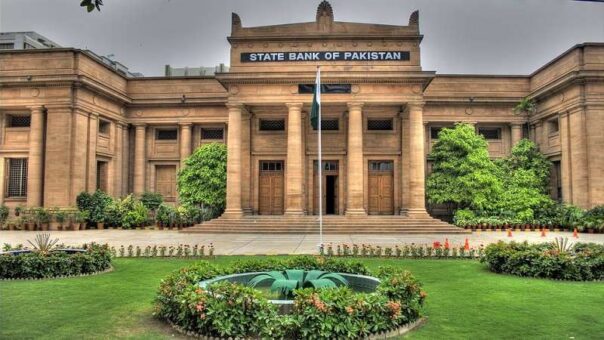Karachi, August 17, 2023 – Pakistan financial challenges have deepened as its total debt and liabilities surged by 29 percent, reaching a staggering Rs77 trillion in the fiscal year 2022-23, which concluded on June 30.
The data, released by the central bank on August 16, 2023, paints a concerning picture of the country’s economic landscape.
READ MORE: Petroleum Price Increase Leads to 31% Rise in Essential Item Costs
At the close of the previous fiscal year, Pakistan’s cumulative debt and liabilities, encompassing both domestic and foreign obligations, amounted to Rs77.104 trillion, marking a notable escalation from Rs59.772 trillion in the preceding year. The data provided by the State Bank of Pakistan (SBP) indicates that the total debt and liabilities as a percentage of the GDP escalated from 89.7 percent in the preceding year to 91.1 percent in FY2022/2023.
The nation’s debt burgeoned by 28.4 percent to reach Rs72.991 trillion, while liabilities experienced an even steeper increase of 34.6 percent, ascending to Rs4.587 trillion in the fiscal year 2023.
A pivotal factor behind this escalation is the Pakistani government’s substantial reliance on domestic borrowing. With the suspension of the International Monetary Fund (IMF) loan program and a dearth of foreign currency inflows via bilateral and multilateral channels, the administration found itself compelled to turn to domestic sources, notably commercial banks, to finance its burgeoning budget deficit and cover the costs of repaying domestic debt.
READ MORE: Pakistan’s Latest Foreign Exchange Reserves Drop to $13.34 Billion
This reliance on domestic borrowing led to a 25 percent increase in the nation’s domestic debt, soaring to Rs38.808 trillion in FY2023. However, the situation was further exacerbated by a sharp depreciation in the value of the local currency. This resulted in a significant rise in foreign debt, which surged to Rs32.495 trillion in FY2023 from Rs24.358 trillion in the previous fiscal year. The rupee’s value plummeted by a substantial 41 percent during the last fiscal year, trading at 286 per dollar, compared to 204 in the previous year.
The consequences of this escalation are evident in the country’s debt and liability servicing, which climbed by a staggering 76 percent to reach Rs9.819 trillion in FY2023. Interest payments on the debt alone swelled from Rs3.331 trillion to Rs5.935 trillion.
The escalating budget deficit and the absence of substantial foreign inflows are adding further strain to the situation. To stave off the threat of default, the International Monetary Fund recently approved a fresh bailout of $3 billion for Pakistan’s economy, which was teetering on the brink of a debt crisis. Additionally, in July, friendly nations, including the Kingdom of Saudi Arabia, the IMF, and the United Arab Emirates, extended financial support amounting to $4.2 billion.
READ MORE: Pakistan Assures Full Implementation of One Window Operations for Chinese Investors
The State Bank of Pakistan foresees a potential increase in foreign exchange reserves, projecting that they could reach $12 billion by the end of the current fiscal year. However, this projection comes with the caveat that the reserves might dwindle if the current account experiences significant pressure.
As the country grapples with mounting debt servicing expenses, combined with the high-interest rate environment, Pakistan’s budget deficit is on an upward trajectory. The situation might alleviate if imports are allowed to fully open, leading to increased tax revenues, as highlighted by Tawfik, a representative of the SBP.
The SBP has separately disclosed data on Pakistan’s foreign debt in dollar terms. The figures show a 4.62 percent decrease in the nation’s external debt and liabilities, amounting to $124.296 billion in FY2023. The previous fiscal year saw Pakistan paying $20.811 billion for external debt servicing, compared to $15.10 billion in the preceding year, with $16.390 billion attributed to principal repayments and $4.420 billion to interest.
READ MORE: Pakistan’s Exports Witness 12.68% Decline in July 2023
The road ahead for Pakistan’s economy remains challenging, necessitating prudent financial management and strategic measures to curb the escalating debt and liabilities and restore economic stability.
